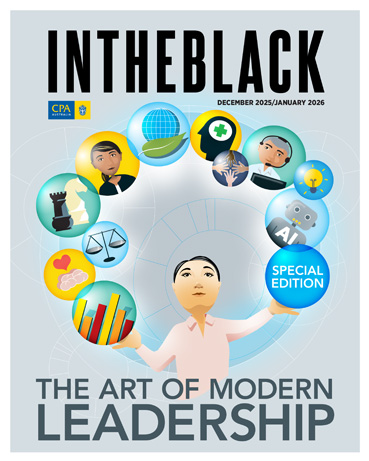Loading component...
At a glance
By Beth Wallace
It is a truth universally acknowledged: public speaking is something many of us fear. While some people can avoid giving speeches and presentations, few can escape the many interactions that occur spontaneously, both in the workplace and in life.
“The vast majority of our communication happens in the moment — asking questions, giving feedback, fixing mistakes, making small talk,” says Matt Abrahams, a lecturer at Stanford Graduate School of Business and host of the Think Fast Talk Smart podcast.
“People don’t learn how to do it — and that’s part of the reason they stress about it. Plus, these situations often have high stakes where our credibility is on the line, and we feel unprepared.”
The good news is that much like an athlete hones their talent, people can train themselves to communicate well when put on the spot.
Abrahams splits the principles of effective and spontaneous communication into two categories: mindset and messaging.
Principle 1: Mindset
Mindset involves overcoming one of the biggest barriers to good communication: ourselves.
“It’s innate to being human to get nervous in front of others,” he says. “But there are things you can do to manage your anxiety — both the symptoms and the sources.”
Physiological symptoms triggered by public speaking can include a rapid heartbeat, shaking and sweating — all of which can be eased with deep belly breathing. Abrahams recommends taking a deep inhale, then exhaling for twice as long.
“You only have to do that a few times to slow down your autonomic nervous system,” he says. “High-stakes negotiators do this all the time as a way of calming down.”
Another effective strategy for shaking off nerves is to move, says Dr Louise Mahler, a communication expert and author of Gravitas: Timeless Skills to Communicate with Confidence and Build Trust.
“There’s nothing better than bouncing on your chair or moving back from the table and suddenly moving back in,” she says.
“Move the body, move the arms, move the head. This releases tension in the upper body and keeps the diaphragm free.”
Dealing with the sources of anxiety can be a little trickier. Some common causes include the desire to be perfect or associating mistakes with failure. Abrahams says conquering them requires a mindset shift: “focus on connection over perfection and reframe mistakes as opportunities to learn”.
Principle 2: Message
The second element to focus on during spontaneous communication is the message.
As a regular TV commentator, Mahler is often required to think on her feet. When asked a question, she does not have time to pause and organise her thoughts, so she relies on a simple formula to frame her response.
“I make a statement, back it up with three points, and then follow it with a statement,” she explains.
When forming a response, Mahler says it is important to acknowledge what the other person has said and also reflect the emotion and content of their comment or question.
“For the acknowledgment phase, the words we use are ‘it’s’, ‘that’s’ and ‘thank you’,” she says.
An acknowledgment statement could be “Thank you for raising that” or “It’s fascinating, isn’t it?”
A linking phrase such as “It sounds like you’re …” can then lead into a comment that reflects back what the other person said.
In a workplace setting, a manager might ask why a project hasn’t been finished on time. “You could reply, ‘Thank you for raising that’,” Mahler explains. “Then you might add, ‘Clearly, there’s concern about x, y and z. On the other hand, we’re taking action and plan to do this, this and this.’”
Limiting points to no more than three is key, she adds, explaining that “staying on point is about keeping people captivated”.
Abrahams agrees, flagging that people tend to say more than they need to during spontaneous conversations, because they discover what they want to say as they are saying it.
“You can focus your message in two ways,” he says. “First, think about your audience and what’s important to them. Second, have a clear goal. What do you want them to know? How do you want them to feel? And what do you want them to do?
“When a question comes in, if your answer will accomplish your goal, say it. If not, say something else.”
Practice makes perfect
Though it may seem contradictory, learning to speak confidently in spontaneous situations takes practice and time.
For those looking to develop this skill, Abrahams proposes finding low-stakes opportunities to practise.
“Join a Toastmasters group, attend meet-ups to make small talk or volunteer to speak at an event and field questions,” he suggests.
He also recommends asking generative artificial intelligence tools like ChatGPT to formulate questions about a particular topic, then practise answering them.
“The goal is not to memorise answers, but to focus on drilling and spontaneity,” Abrahams explains.
“Many of us want to memorise every word so we get it right — but that actually decreases the bandwidth we have to communicate well.
“You really just need to learn how to connect and get your points out there.”

